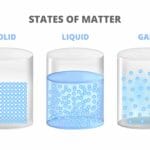Counting atoms might sound intimidating, but it’s actually pretty straightforward once you break it down. This guide is designed to be your go-to resource for understanding chemical formulas and mastering the art of counting atoms. Whether you’re a student just starting out or a teacher looking for engaging resources, we’ve got you covered. Let’s dive in!
Deciphering the Code: Understanding Chemical Formulas
Chemical formulas are like secret codes that tell us exactly what substances are made of. Instead of just saying “water,” the formula H₂O reveals its precise composition: two hydrogen atoms and one oxygen atom. Mastering these formulas is fundamental to understanding chemistry.
Why are these formulas so important?
- Universal Language: They provide a standardized way for scientists worldwide to communicate about chemicals.
- Predicting Reactions: Like a recipe, they dictate the precise proportions of elements needed for chemical reactions (stoichiometry).
- Understanding Properties: Chemical formulas often hint at the properties of a substance, such as flammability or conductivity.
- Foundation for Advanced Concepts: Mastering formulas is a crucial stepping stone to more complex topics like organic and biochemistry.
How do you crack the code? Counting atoms within a formula is simple:
- Element Symbol: Locate the symbol for the element (e.g., H for hydrogen, O for oxygen).
- Subscript: The small number after the symbol (subscript) indicates the number of atoms of that element. No subscript means one atom.
- Parentheses: If a group of atoms is enclosed in parentheses with a subscript outside, multiply the outer subscript by the subscripts inside.
Example: Ca(OH)₂ (calcium hydroxide) contains one calcium atom, two oxygen atoms, and two hydrogen atoms.
While our understanding of chemical bonding is well-established, ongoing research suggests there may be more to discover. Some experts believe our current models could evolve as we learn more about complex interactions at the atomic level.
Level Up Your Skills: Free Printable Counting Atoms Worksheets
Ready to put your knowledge into action? Free printable counting atoms worksheets are an invaluable tool for mastering this essential skill. They offer targeted practice, build problem-solving abilities, and provide immediate feedback. Think of them as your personal trainer for conquering chemical formulas.
These worksheets cover a range of concepts, from basic to advanced:
Beginner: Counting Atoms in Simple Formulas
At this level, you’ll focus on identifying elements and counting atoms in simple molecules like H₂O and CO₂. You’ll learn to interpret subscripts and coefficients, laying the groundwork for more complex formulas.
Intermediate: Exploring Atomic Structure
Dive deeper into the atom itself, exploring protons, neutrons, and electrons. You’ll explore electron configuration, atomic number, atomic mass, isotopes, and ions. These concepts are key to understanding how atoms behave and interact.
Advanced: Molecular Bonding and Reactions
Explore how atoms bond to form molecules through ionic and covalent bonds. You’ll also tackle balancing chemical equations and stoichiometry – the math behind chemical reactions. This level prepares you for more complex chemistry challenges.
| Level | Concepts Covered |
|---|---|
| Basic | Identifying elements, counting atoms, subscripts, coefficients |
| Intermediate | Atomic components (protons, neutrons, electrons), electron configuration, atomic number, atomic mass, isotopes, ions |
| Advanced | Molecular bonding (ionic, covalent), balancing chemical equations, stoichiometry |
While these worksheets offer a robust foundation, remember that scientific understanding is constantly evolving. Ongoing research into subatomic particles like quarks and leptons may further refine our models of atomic structure.
Treasure Trove of Resources: Where to Find Free Printable Worksheets
Here’s a list of reputable sources where you can find free printable counting atoms worksheets, complete with answer keys:
| Resource | Focus | Notes |
|---|---|---|
| Teach Simple | Curated list, various levels | May include paid options |
| Type Calendar | Various levels | Offers flexibility in format |
| Worksheet Zone | Counting atoms in chemical formulas | Targeted practice |
| Mr. G Science | Counting atoms | Good for quick review |
| Watson Science | Counting atoms in compounds | Good for individual practice |
| Dr. Tucek | Counting atoms | Recommends using with other resources |
These resources likely offer worksheets in various formats (PDF, Word), catering to different learning styles. Don’t hesitate to explore and find the resources that best suit your needs.
Maximizing Your Learning: How to Use Worksheets Effectively
Here’s how to get the most out of your worksheets:
- Start with an Example: Review provided examples to understand the process.
- Work Through the Problems: Apply your knowledge to solve the problems on the worksheet.
- Check Your Answers: Use the answer key to identify areas where you might need additional help.
- Don’t Be Afraid to Ask for Help: Reach out to a teacher, tutor, or classmate if you’re struggling.
Boost your understanding with supplementary resources like videos (MooMooMath and Science, Andrew Webb, Teacher’s Pet), notes (Dr. Tucek’s Counting Atoms Notes), and online tutorials.
If you need help with dividing polynomials, see our dividing polynomials worksheet.
Ace Your Exams: How Worksheets Boost Your Chemistry Grades
Worksheets are much more than busywork – they’re powerful tools that can significantly improve your understanding of chemistry and boost your grades:
- Reinforce Core Concepts: Solidify your understanding of chemical formulas, subscripts, and coefficients.
- Sharpen Problem-Solving Skills: Develop analytical skills and problem-solving strategies essential for success in chemistry.
- Targeted Practice: Identify weaknesses and focus your study efforts on specific areas needing improvement.
- Build Exam Confidence: Familiarize yourself with question formats and develop effective test-taking strategies.
These benefits translate directly to better exam performance and a deeper appreciation for the subject matter.
Beyond the Classroom: Real-World Applications of Counting Atoms
Counting atoms isn’t just for classrooms – it plays a crucial role in various fields:
- Medicine: Calculating precise dosages of medications.
- Environmental Science: Analyzing atmospheric composition and monitoring pollutants.
- Materials Engineering: Designing new materials with specific properties.
By mastering counting atoms, you unlock a fundamental skill for understanding the world around us. Grab a worksheet, sharpen your pencil, and embark on an exciting journey of scientific discovery!
- China II Review: Delicious Food & Speedy Service - April 17, 2025
- Understand Virginia’s Flag: History & Debate - April 17, 2025
- Explore Long Island’s Map: Unique Regions & Insights - April 17, 2025
















